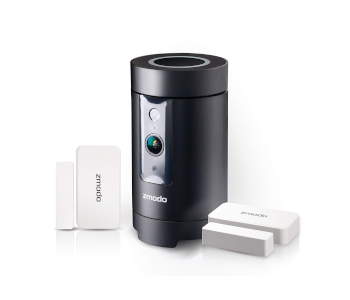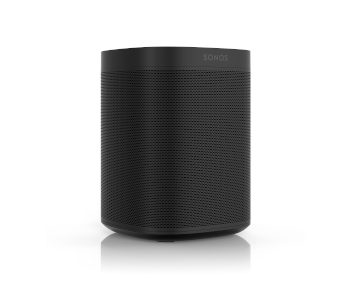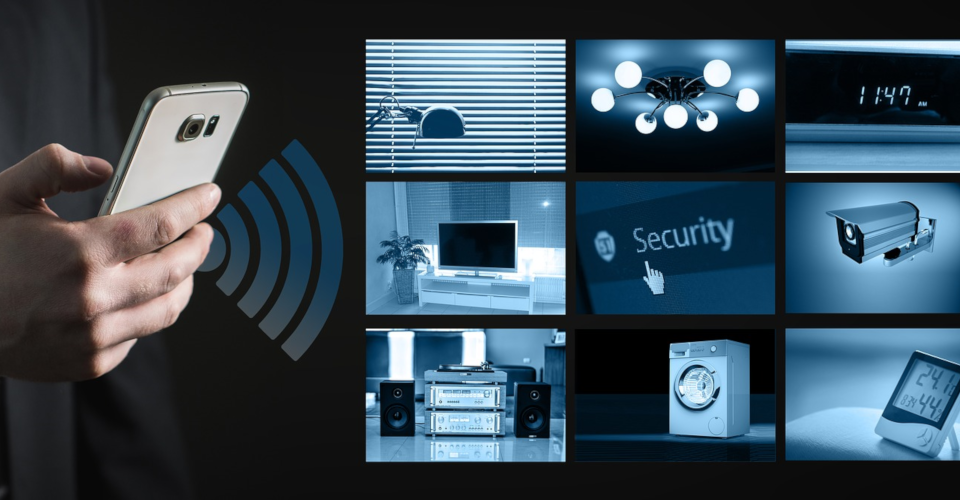How Smart Buildings Will Change Life, Work, and Leisure in the Future
Be it sleeping, working, or having a good time, we spend the majority of our lives with a roof over our heads. Until recently, humans were the only ones smart enough to turn huts into homes or come up with new ways to make factories more efficient. That changed with the advent of artificial intelligence and the Internet of Things.
Smart buildings have the technology needed to assess and cater to their occupants’ needs without human input. They provide a comfortable and productive long-term environment while drastically cutting down on the costs required to maintain it. Below you’ll learn all about what makes a building smart as well as what its benefits are to all involved stakeholders. You’ll also discover what challenges stand in the way of a smart building boom and what different smart buildings may offer once they become more widespread.
What are smart buildings?

The digitization of building operations isn’t a new concept – energy efficiency, climate control, and security could all be monitored and acted on as far back as the 1980s. However, all of these systems were isolated. For it to be considered truly smart, a building’s various control systems need to be connected. This implies that each system generates and shares data others can make use of. For example, the building’s security system shares data on occupancy with its electrical system, which can then limit power consumption in vacant areas of the building to save money.
Smart buildings are more energy-efficient, cheaper to maintain, and more user-focused than traditional buildings. The occupants of a smart building work and relax in optimized conditions, which leads to better productivity. The real-time data a smart building’s connected systems generate is used to optimize energy consumption and made presentable to human administrators in a way that lets them iron out inefficiencies or adopt new policies based on trends.
Factories were the first buildings where a combination of sensors, automation, and data analytics resulted in marked improvements. On the one hand, connected machines can now work at optimum efficiency longer since sensors recognize the potential for malfunctions before they happen. On the other, automated stock management ensures that there are always enough raw materials or precursor components available for production not to halt because of shortages or human oversight.
However, applying an approach that was successful in factories to residential, commercial, and service buildings remained unfeasible until recently. This was mostly due to how expensive it was to set up a network of sensors and connect it to a cloud service that stores and analyzes gathered data. The prices for sensor manufacturing and cloud computing services continue to decrease, so much so that smart buildings are becoming a feasible reality. The worldwide market value for smart buildings in 2018 was $58.1 billion and is expected to reach $198 billion in 2025.
While new buildings will increasingly be designed and built with smart systems in mind, the great thing about making a building smart is the ability to retrofit existing ones with connected systems. These are designed to minimize adoption costs by working with existing systems like HVAC and lighting. Their price is also offset by lower power builds in the future thanks to intelligent power management. Once a building’s network of connected systems is in place, it can be expanded as new solutions become available and regularly updated through the cloud.
What are the benefits of smart buildings for owners and administrators?
Benefits for owners

Operation costs are an aspect of building management occupants rarely consider, yet owners and tenants are constantly looking for ways of reducing overhead and keeping running costs low. Smart buildings are designed to assess the occupants’ needs and economically fulfill them.
For example, outfitting an office building with motion sensors has numerous benefits. A monitored room found to be empty doesn’t need to be climate controlled or lit. Conversely, these sensors gather data on what times of day an area is used and for how long. That data can be used to optimize the HVAC system’s output to make the area temperate as occupants are about to arrive.
A smart building is a valuable asset. Owners that embrace smart buildings will receive higher returns on their investments because of the positive impact of smart buildings on land value. Early adopters can look forward to the prestige and exposure that comes with being ahead of the curve, while any smart building owner will be seen as environmentally conscious and responsible.
Benefits for tenants
Insight into occupant behavior is a boon for tenants, i.e., the companies that occupy space inside a building. Consider the use of motion sensors again – knowing an employee’s location and cross-referencing it with their duties & schedule may result in optimizing worker efficiency. Analyzing what routes workers are taking to reach a destination can lead to space rearrangement strategies for existing buildings and improved designs for future construction.
Access to important building data ensures that day-to-day operations run smoothly. Multiple companies sharing the same office space in a smart building can easily coordinate the usage of shared areas like meeting rooms or convert rarely-used areas into communal spaces and even sub-let them to others.
Benefits for administrators & maintenance personnel
The vast amounts of data generated by a smart building’s systems take the guesswork out of administrative and maintenance tasks. A problem in a standard building’s heating system can take hours to be located. That same problem is immediately reported and pinpointed in a smart building thanks to its array of sensors. This frees up maintenance staff to come up with better long-term strategies and improve building efficiency instead of chasing down issues as they happen.
Having a regular maintenance schedule is crucial for smooth operation but doesn’t account for the fact that not all equipment is used with the same frequency. A mall may have multiple escalators, one of which is used by far more shoppers because it is closest to the entrance. The same can be applied to vending machines, elevators, training equipment in a gym, and numerous other examples. Taking advantage of use data leads to optimized maintenance, lower costs, and reduced risk of malfunction.
How do smart buildings impact their occupants?
While smart buildings are meant to be efficient and sustainable, they’re also human-centric by design. The goal for a smart building’s occupants is to feel comfortable, to be able to focus, and to have immediate access to the information they need to make their stay pleasant.
It’s impossible to get lost inside a smart building since occupancy sensors link to your phone and establish your exact location. From there, it’s only a matter of following GPS-like navigation instructions or augmented reality guides to reach your destination.
Your smartphone becomes a key, a wallet, and a source of information once you enter a smart office building. The phone can communicate with the building’s security system and help identify you as a person with clearance. The building determines the lighting and climate in a room, but you may be able to override these with your personal preferences. Feeling hungry? Check your phone and see what’s on the cafeteria’s menu and how many people are online. Alternately, you can use the phone as a contact payment device for snacks and beverages at vending machines.
Multiple tech companies are already experimenting with the concept of building AI. This helpful assistant will be able to point visitors in the right direction, schedule appointments, and even adjust climate or lighting controls based on people’s preferences. Building AIs are still a ways off from mainstream implementation, but they’re sure to become the way we interact with smart buildings in the future.
What kind of smart buildings can we look forward to?

There are as many opportunities for smart building development as there are services a building can provide. Here are a few that will have a significant impact on our lives
The smart garage promises to transform the way we handle parking. The idea behind it is that the driver has as little involvement with the garage as possible. All they’ll need to do is drive their car onto a platform, and the garage’s AI will allocate space for the vehicle and store it until the driver returns. This means that the garage can be smaller since no paths need to be built. It also protects cars by enclosing them into modules inaccessible to humans, thus preventing theft or vandalism. Finally, car emissions associated with parking will plummet since vehicles will be admitted at one or more predefined locations and won’t need to be driven to an empty space.
Smart hospitals will make the lives of patients & staff easier. Doctors & nurses will be able to keep track of patients’ vitals remotely and intervene the moment there’s an issue. The smart pharmacy will dispense drugs in prescribed amounts and eliminate the possibility of fraud or error due to negligence or bad handwriting. The patient will be made to feel at home thanks to voice-controlled entertainment and amenities. Visitors to the hospital will get instructions on how to reach their loved ones or a specific department.
Smart hotels will take the tailored approach to each guest to a new level. Chains like Marriott and Hilton are already putting smart speakers into their hotel rooms to let guests listen to music, control the lights, or get up-to-date weather reports. Future developments will take this further by having devices in the room address the guest with their name and letting them book a massage or a table at the hotel’s restaurant. Owners can expect energy savings and use data-driven decisions to find out general guest preferences and make their stay even more enjoyable.
Smart museums & galleries will change the way visitors experience culture and education. There are already museums where visitors’ phones sync with exhibits via Bluetooth and gain access to additional information, media, or interactive games. This lets visitors break from the traditional guided tour and organically learn more about the content they’re interested in. Meanwhile, museum and gallery administrators will have an easier time keeping track of visitor numbers, the success of individual exhibitions, and the public’s overall satisfaction with the offered experience. Collected data will allow them to design more enticing displays and attract even more visitors in the future.
Are there challenges to overcome?
Few buildings in the world today can be classified as smart in the way outlined in this article. More of them are definitely on their way, but three key developments need to happen for smart buildings to become a staple of our cityscapes.
The first is standardization. Existing smart buildings have control systems created by different companies with diverse standards and technologies. Bridging the gap between systems requires hubs that support different connection types and provide internet access. The companies that produce smart building solutions are rivals in an emerging market and unlikely to give up patents or make their products more compatible. These differences will need to be set aside and standardization guidelines developed before smart buildings can become a concept one can offer to the general public.
Data interpretation is the second step in the development of smart buildings. A single building can have hundreds of sensors and multiple smart systems which generate massive amounts of raw data. This data needs to be sifted through and presented to operators in a way that makes it easy to assess the building’s status at a glance and make informed decisions. The data we’re getting today is unstructured, so investments into the development of machine learning and artificial intelligence are needed to process and interpret it effectively.
Lastly, there’s data security. A breach in the building’s security system could result in the loss of sensitive data, while hackers could potentially take control of important components like the power mains or the HVAC system. Then there’s the matter of unscrupulous companies who offer smart services and then sell user data on the building and its occupants to third parties. That’s why strict regulations as well as advances in data security need to precede a widespread acceptance of smart buildings.

